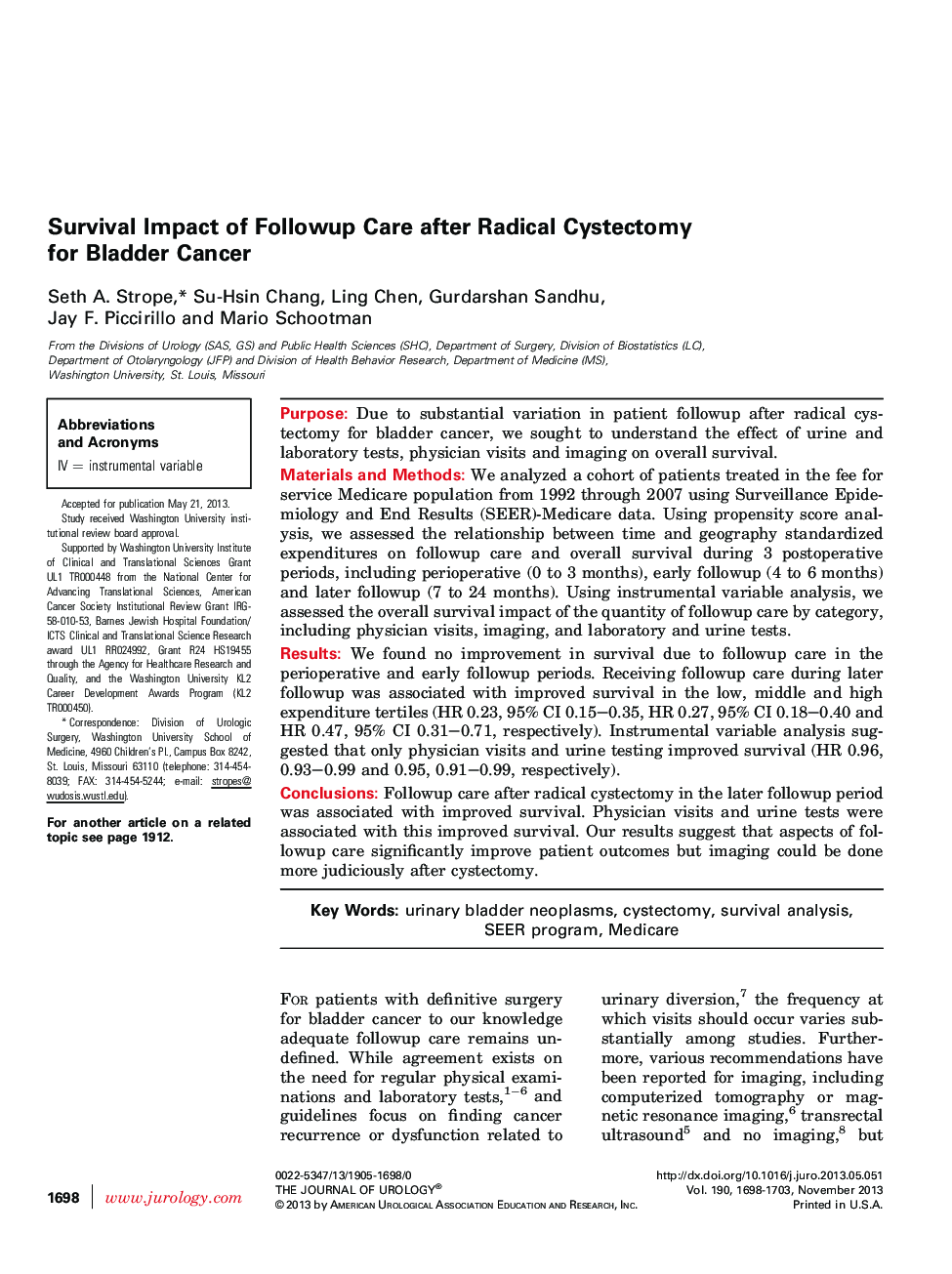| Article ID | Journal | Published Year | Pages | File Type |
|---|---|---|---|---|
| 3861808 | The Journal of Urology | 2013 | 6 Pages |
PurposeDue to substantial variation in patient followup after radical cystectomy for bladder cancer, we sought to understand the effect of urine and laboratory tests, physician visits and imaging on overall survival.Materials and MethodsWe analyzed a cohort of patients treated in the fee for service Medicare population from 1992 through 2007 using Surveillance Epidemiology and End Results (SEER)-Medicare data. Using propensity score analysis, we assessed the relationship between time and geography standardized expenditures on followup care and overall survival during 3 postoperative periods, including perioperative (0 to 3 months), early followup (4 to 6 months) and later followup (7 to 24 months). Using instrumental variable analysis, we assessed the overall survival impact of the quantity of followup care by category, including physician visits, imaging, and laboratory and urine tests.ResultsWe found no improvement in survival due to followup care in the perioperative and early followup periods. Receiving followup care during later followup was associated with improved survival in the low, middle and high expenditure tertiles (HR 0.23, 95% CI 0.15–0.35, HR 0.27, 95% CI 0.18–0.40 and HR 0.47, 95% CI 0.31–0.71, respectively). Instrumental variable analysis suggested that only physician visits and urine testing improved survival (HR 0.96, 0.93–0.99 and 0.95, 0.91–0.99, respectively).ConclusionsFollowup care after radical cystectomy in the later followup period was associated with improved survival. Physician visits and urine tests were associated with this improved survival. Our results suggest that aspects of followup care significantly improve patient outcomes but imaging could be done more judiciously after cystectomy.
